
At various times, and in various media, over the course of the third quarter we have made reference to some version of the phrase “it’s all about bonds.” As we enter the fourth quarter, that still remains the case. But what does that mean? I am not trying to come off as a financial media pundit who utters vague concepts to appear profound. It really is all about bonds. We are witnessing what happens when a 40-year trend comes to an end. A trend that has been in place for the entirety of my career (as I would imagine is true for many reading this) and nearly the entirety of my life.
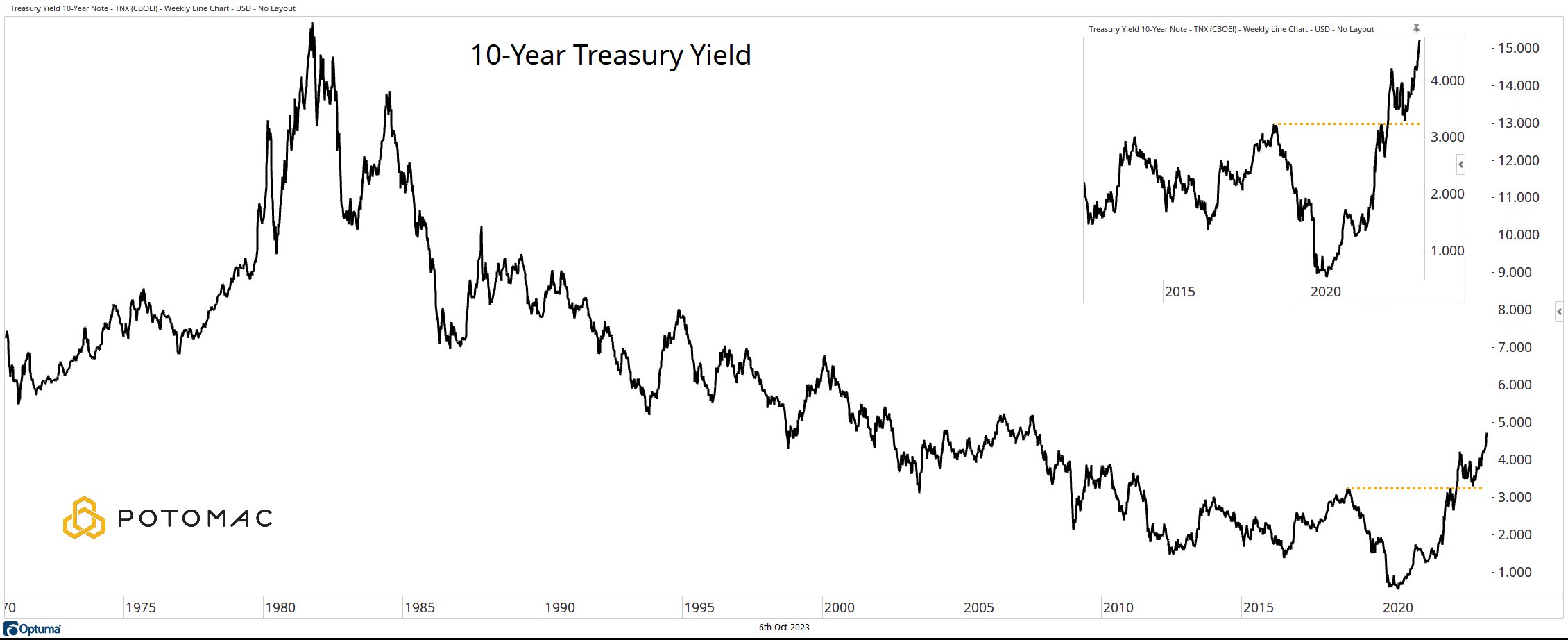
This shift in the tide for rates is bound to have large and long-lasting implications, and it is likely just getting started (more on this later). Will it be a straight line up and to the right? Of course not. But it does appear that will be directionally correct. As rates have moved higher, they have done something they have not done in a long time… provide a reasonable alternative for investment dollars. We have been living in a T.I.N.A. World (There is No Alternative to stocks) for so long that 4.5% on cash in a money market fund looks interesting. Greater than 5% on a two-year government paper likely warrants your attention. As such, riskier assets such as equities come under pressure.
Our long-term buy signal, which was triggered at the beginning of the year, remains in place, but we are beginning to see some signs of weakness emerge.
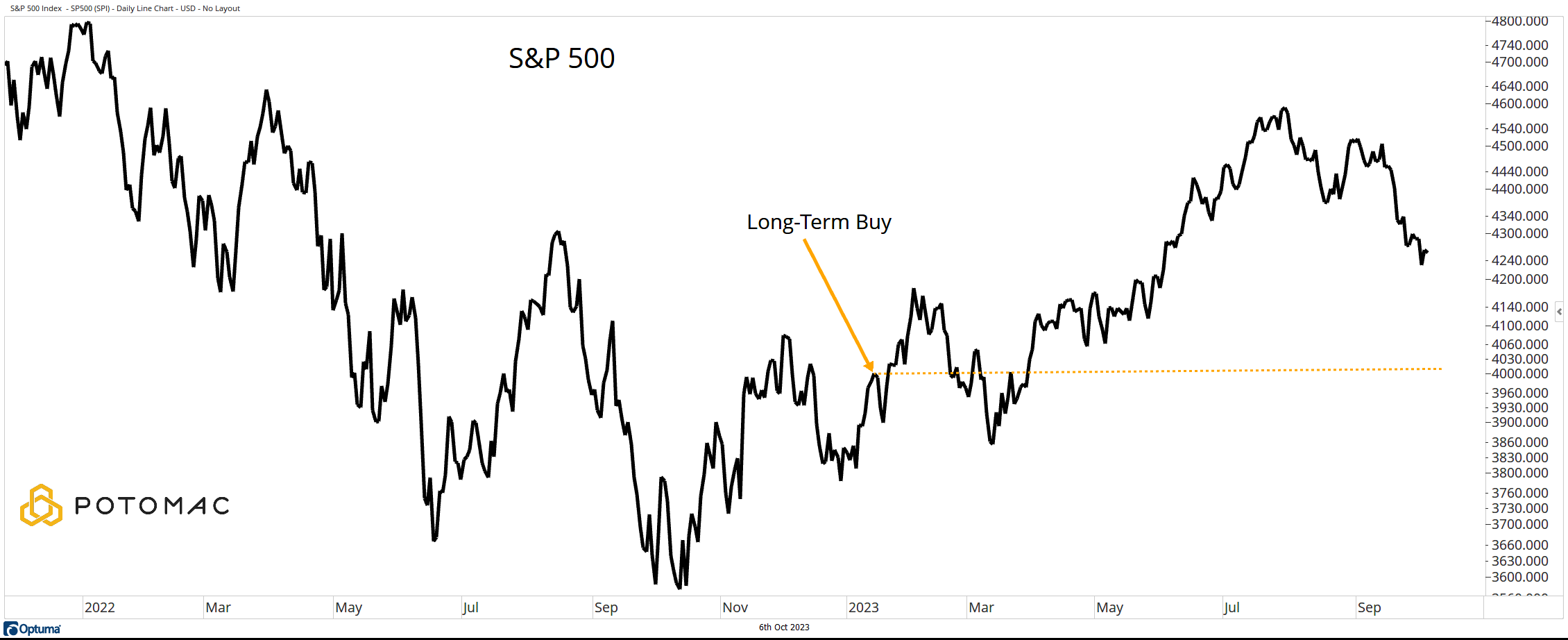
That weakness is playing out under the surface of the market as Net New Highs on the New York Stock Exchange have turned negative. They are not nearly as bad as they were in 2022, but they have exceeded the lows seen during the regional banking scare in March.
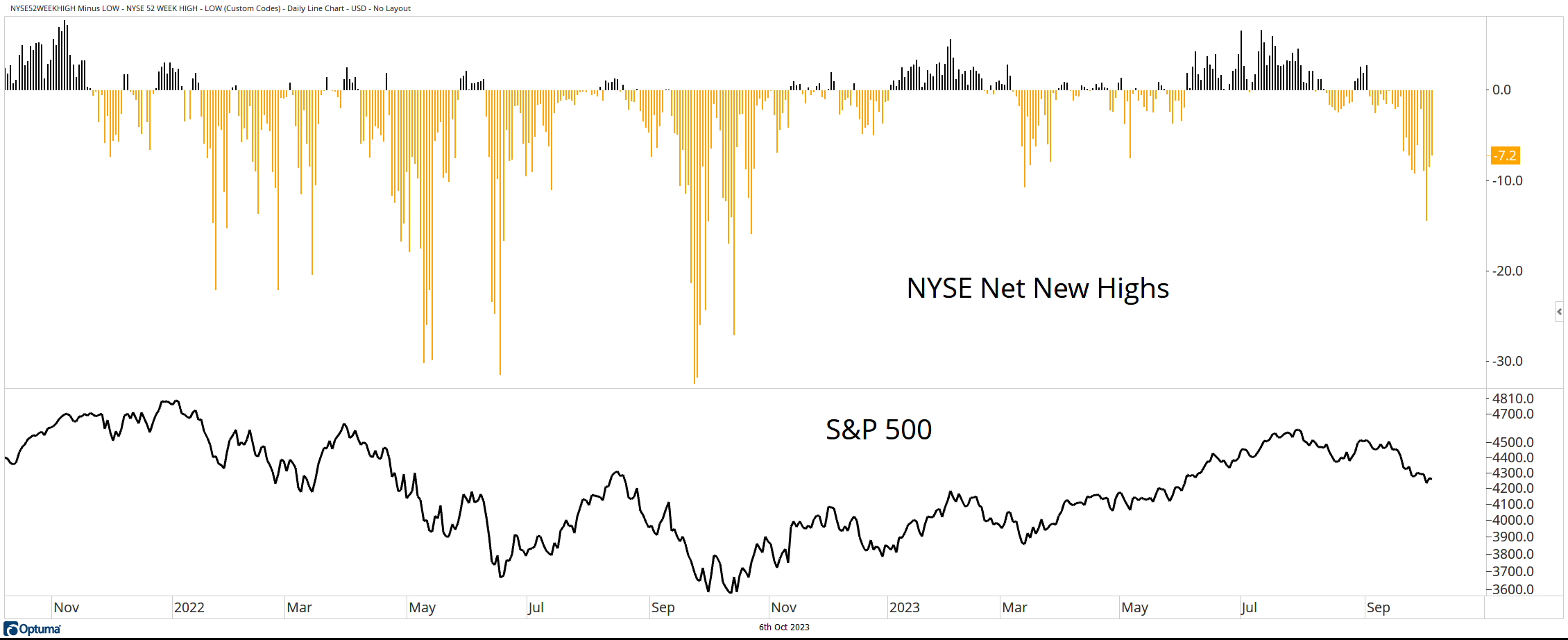
At the same time, our 21-Day Volume Ratio has turned negative as well. Interestingly, this indicator gave a bullish signal in July when it ticked over 100. That served as a trigger for our models to become fully invested.
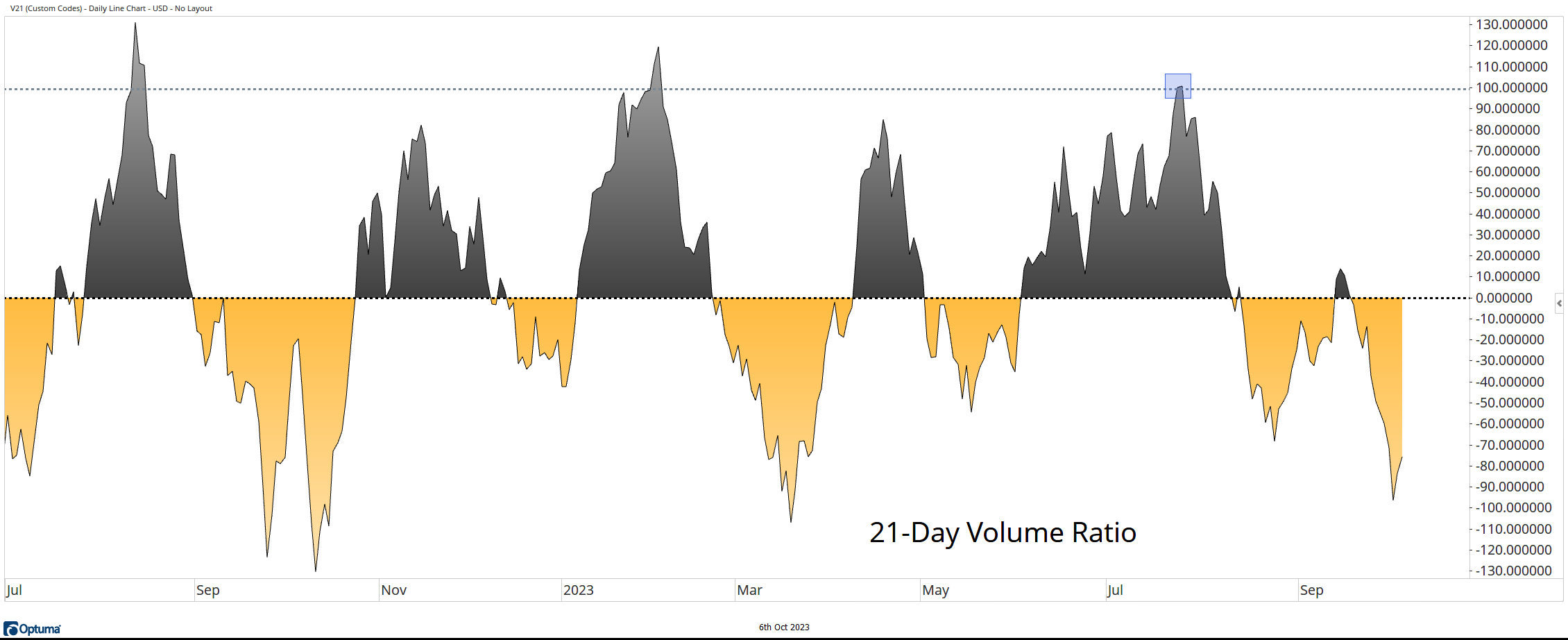
With the market under pressure and breadth weakening, one would expect the “traditionally” safer pockets of the equity market to outperform, but one would be wrong. Note that while the stock market was strong to begin 2023, Utilities and Staples underperformed, which we would expect. However, since stocks peaked on July 28th, both of these defensive groups have continued to lag.
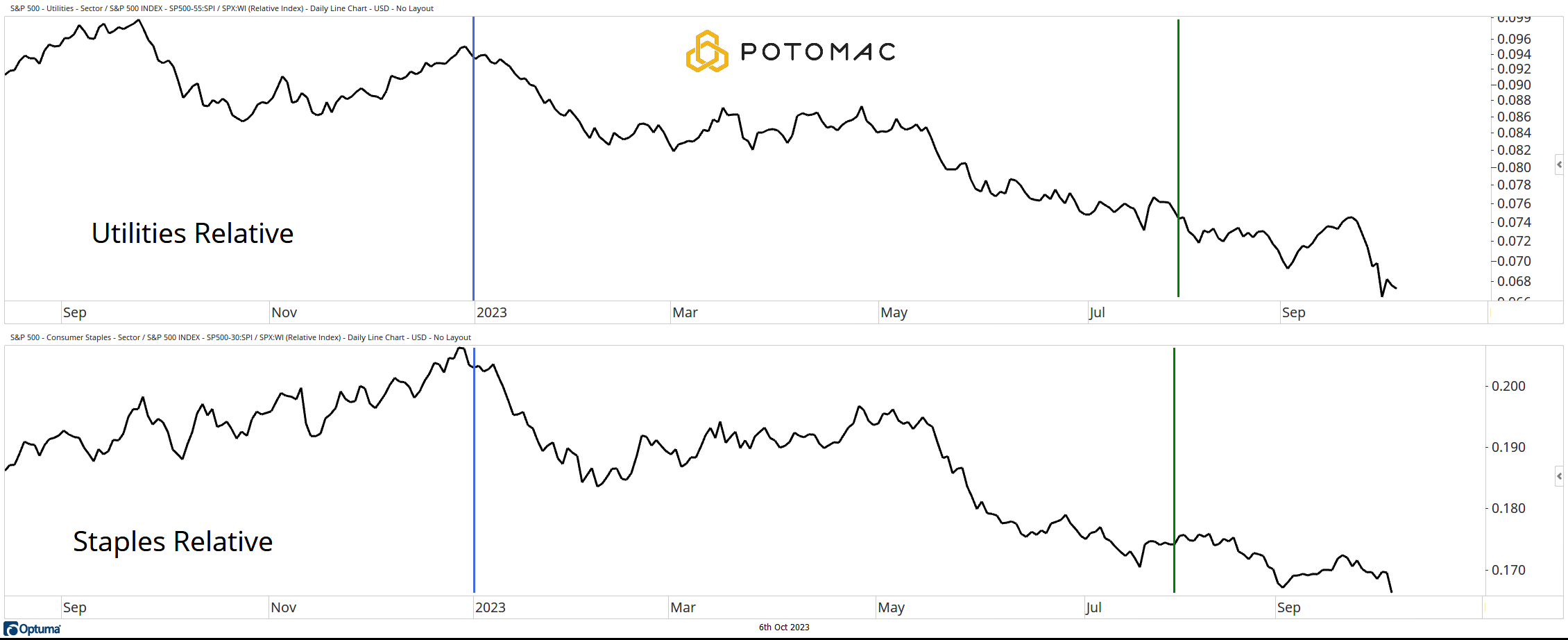
This gives us a nice segue into changing market relationships. For the past 40 years, we have lived in a world with falling rates. For 24 of those years (1998 – 2022), I can argue that we were also mostly experiencing disinflation. Fast forward to today, and we have rising rates and inflation. Is it fair to assume that the relationships that held from 1982 – 2022 are going to continue going forward? Can Utilities, with their interest rate sensitivity, be expected to outperform in down markets?
However, the shift that we see as having the largest potential implications is in the relationship between stocks and bonds. This is something that we spent a lot of time on last year and have recently begun to revisit. For much of the time between 1998 and 2022, stocks and bonds had an inverse correlation. When stocks zigged, bonds zagged. This was a welcome environment for investors who blindly used bonds as an equity diversifier as well as for tactical managers who blindly bought treasuries as their “risk-off” asset.
That environment appears to be changing to one of positive correlation. The one-year relationship is already there, and the five-year is close.
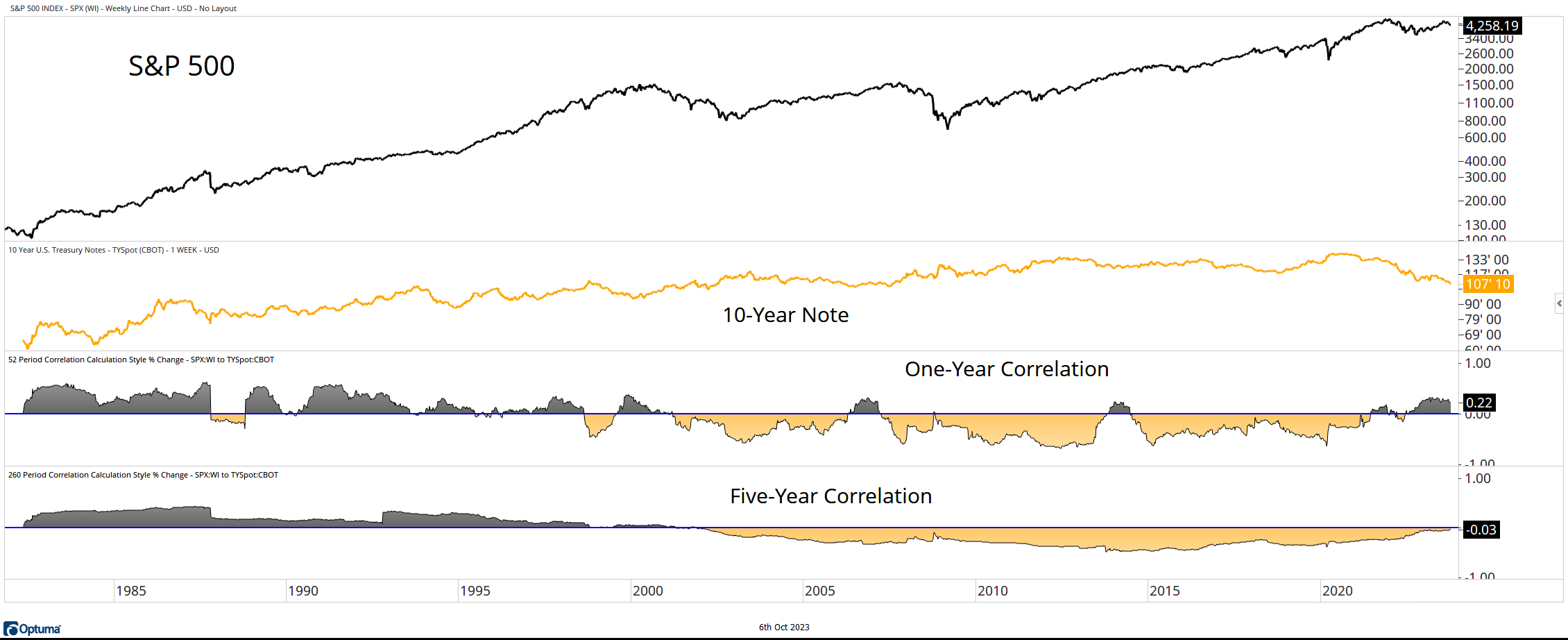
As this has begun to play out, long-duration treasuries have given these investors equity-like drawdowns. Here is the 30-Year Bond, more than 41% from its high.
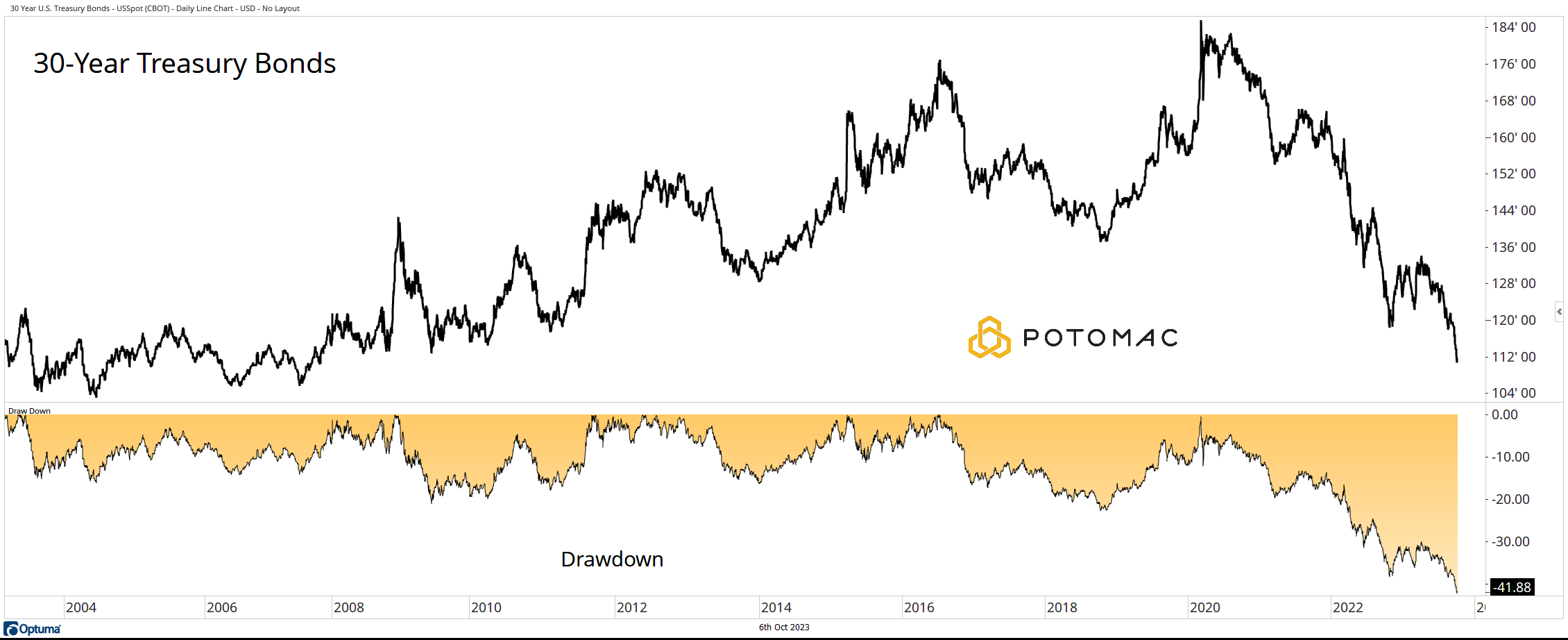
Sure, long-duration is more sensitive to rising rates. Perhaps the 10-Year is holding up better? It is, but would you want this as your diversifier or your risk-off trade? Nearly 24% off the high.
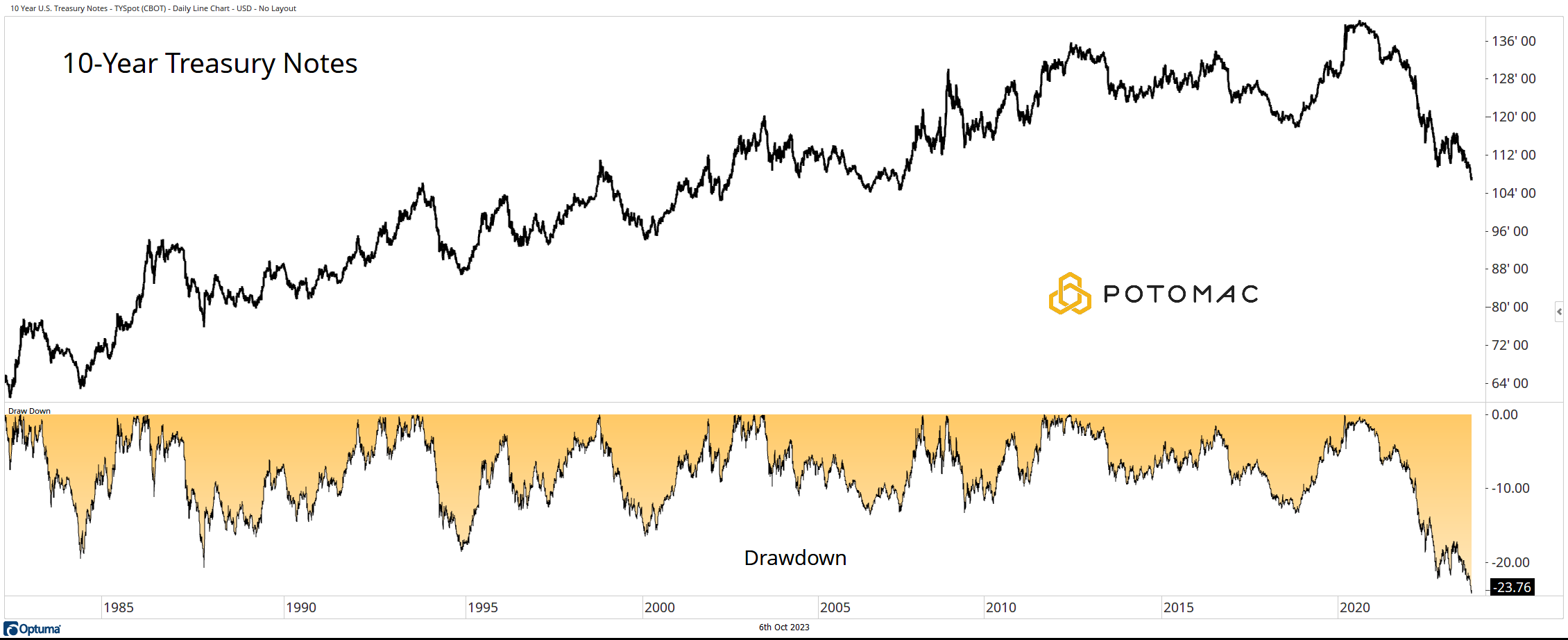
This has made its way into the performance of the sacred 60/40 portfolio. The iShares Core Growth Allocation ETF (AOR) is a good proxy for the diversified portfolio. It is back below the pre-Covid peak and moving lower.
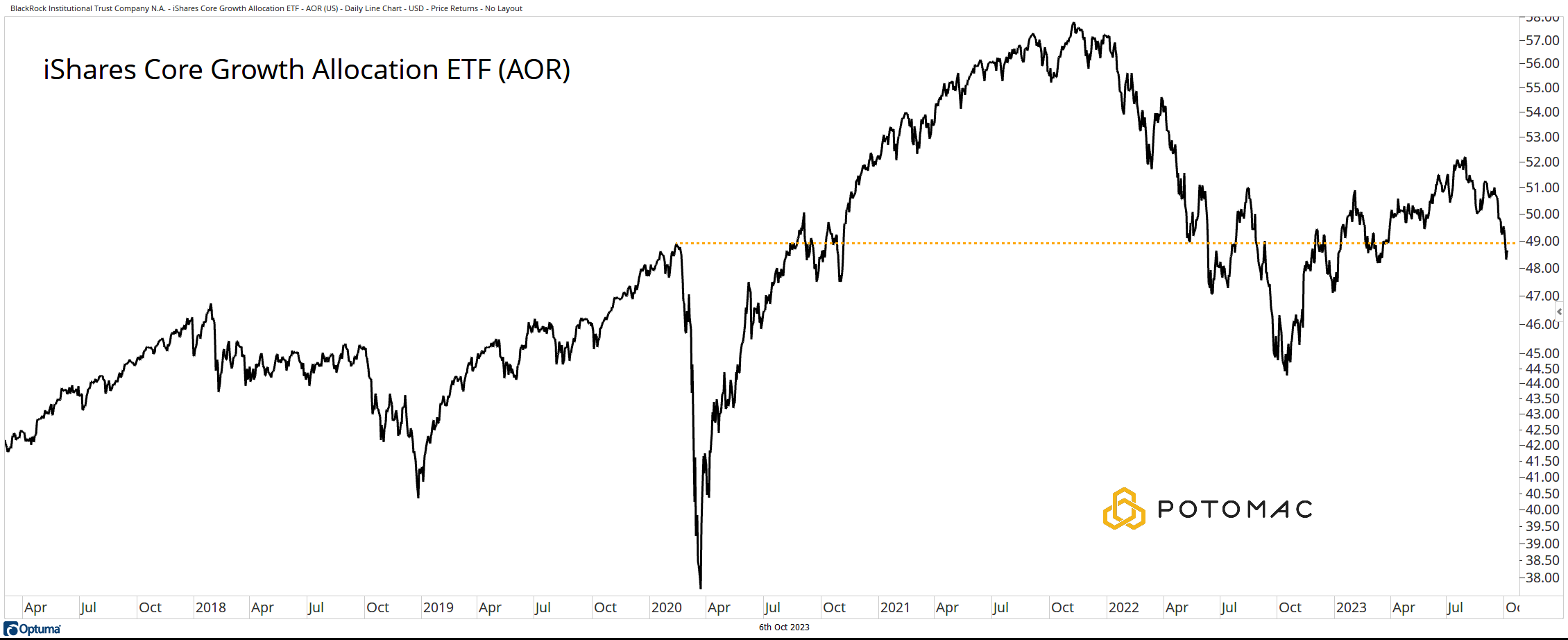
Things change. The stories, themes, and relationships that existed in a falling-rate disinflationary regime may not be the same in the complete opposite environment. Here is the problem, though. It will take years (maybe decades) to learn which have changed and to what degree. What likely will not change is that price trends will continue to provide valuable information. If stocks are going down, but Utilities are not outperforming, should you overweight them? Probably not. Price is truth, the rest is an interesting story.
*All charts from Optuma as of the close of trading on October 4, 2023.
Potomac Fund Management ("Company") is an SEC-registered investment adviser. SEC registration does not constitute an endorsement of the advisory firm by the SEC nor does it indicate that the advisory firm has attained a particular level of skill or ability. This information is prepared for general information only and should not be considered as individual investment advice nor as a solicitation to buy or offer to sell any securities. This material does not constitute any representation as to the suitability or appropriateness of any investment advisory program or security. Please visit our FULL DISCLOSURE page. The company does not make any representations or warranties as to the accuracy, timeliness, suitability, completeness, or relevance of any information prepared by any unaffiliated third party, whether linked to the Company website or incorporated herein, and takes no responsibility for any of this information. The views of the Company are subject to change and the Company is under no obligation to notify you of any changes. Different types of investments involve varying degrees of risk, and there can be no assurance that the future performance of any specific investment or investment strategy will be profitable or equal to any historical performance level.
PFM-336-20231017
